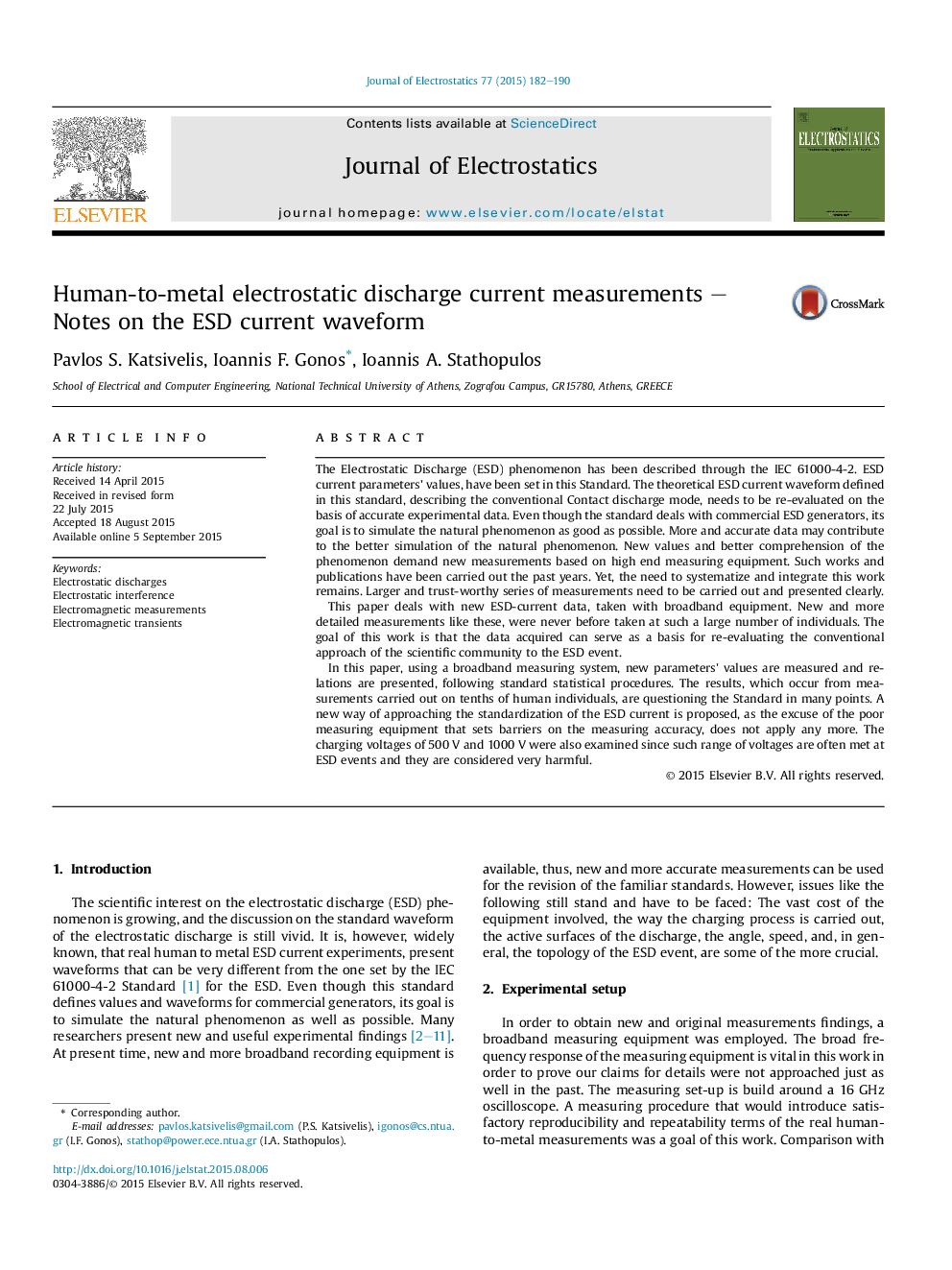| Article ID | Journal | Published Year | Pages | File Type |
|---|---|---|---|---|
| 726493 | Journal of Electrostatics | 2015 | 9 Pages |
•We present new ESD-current data.•The charging voltages of 500 V and 1000 V were examined.•We re-evaluate the conventional approach to the ESD event.•More accurate values of ESD-related parameters and the relations between them are presented.
The Electrostatic Discharge (ESD) phenomenon has been described through the IEC 61000-4-2. ESD current parameters' values, have been set in this Standard. The theoretical ESD current waveform defined in this standard, describing the conventional Contact discharge mode, needs to be re-evaluated on the basis of accurate experimental data. Even though the standard deals with commercial ESD generators, its goal is to simulate the natural phenomenon as good as possible. More and accurate data may contribute to the better simulation of the natural phenomenon. New values and better comprehension of the phenomenon demand new measurements based on high end measuring equipment. Such works and publications have been carried out the past years. Yet, the need to systematize and integrate this work remains. Larger and trust-worthy series of measurements need to be carried out and presented clearly.This paper deals with new ESD-current data, taken with broadband equipment. New and more detailed measurements like these, were never before taken at such a large number of individuals. The goal of this work is that the data acquired can serve as a basis for re-evaluating the conventional approach of the scientific community to the ESD event.In this paper, using a broadband measuring system, new parameters' values are measured and relations are presented, following standard statistical procedures. The results, which occur from measurements carried out on tenths of human individuals, are questioning the Standard in many points. A new way of approaching the standardization of the ESD current is proposed, as the excuse of the poor measuring equipment that sets barriers on the measuring accuracy, does not apply any more. The charging voltages of 500 V and 1000 V were also examined since such range of voltages are often met at ESD events and they are considered very harmful.
